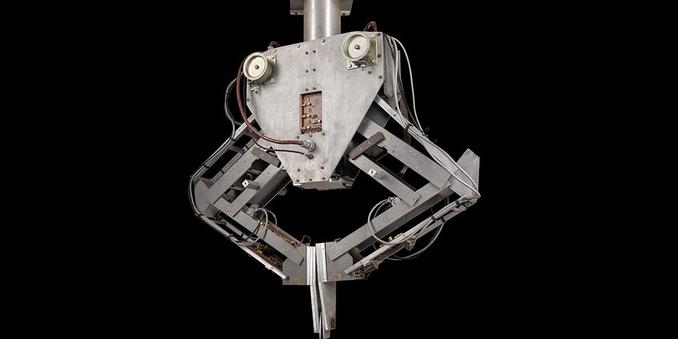2025-06-10 07:22:22
Understanding the Error Sensitivity of Privacy-Aware Computing
Mat\'ias Mazzanti (University of Buenos Aires), Esteban Mocskos (University of Buenos Aires), Augusto Vega (IBM T. J. Watson Research Center), Pradip Bose (IBM T. J. Watson Research Center)
https://arxiv.org/abs/2506.07957
2025-07-08 13:06:51
Cyclic Equalizability of Words and Its Application to Card-Based Cryptography
Kazumasa Shinagawa, Koji Nuida
https://arxiv.org/abs/2507.04916 https://
2025-05-10 06:53:26
USC professor Allison Marsh writes this delightful short article for IEEE Spectrum about Marvin Minsky and Seymour Papert's British counterparts in Cambridge and how, in their case, a document (the Lighthill Report) precipitated cuts in British AI research funding in ways similar to how funding was temporarily cut in the U.S. following MIT's publishing of Minsky and Papert's "Perceptrons" in 1969.
"Freddy the Robot Was the Fall Guy for British AI"
2025-05-09 08:41:35
Building on the 90s, statistical n-gram language models, trained on vast text collections, became the backbone of NLP research. They fueled advancements in nearly all NLP techniques of the era, laying the groundwork for today's AI.
F. Jelinek (1997), Statistical Methods for Speech Recognition, MIT Press, Cambridge, MA
#NLP
2025-07-03 09:05:40
An analysis of 15M biomedical abstracts from 2010 to 2024 finds researchers using AI to write abstracts use certain words far more often than those who don't (Gina Kolata/New York Times)
https://www.nytimes.com/2025/…
2025-06-10 16:41:39
This https://arxiv.org/abs/2504.21398 has been replaced.
initial toot: https://mastoxiv.page/@arXiv_csIR_…
2025-07-08 13:06:35
Researchers Jailbreak AI by Flooding It With Bullshit Jargon https://www.404media.co/researchers-jailbreak-ai-by-flooding-it-with-bullshit-jargon/
2025-05-31 23:47:45
New around here, hi!
For those who'd like a big old dose of "yes we can" energy,
please check out
"Words to Win By "
where every episode details a campaign we've won somewhere
and delves into the research, messaging & strategies used to do it.
https://wordstowinby-pod.com/
2025-07-10 08:23:20
GloBIAS: strengthening the foundations of BioImage Analysis
A. A. Corbat (BioImage Informatics Unit, Science for Life Laboratory and Department of Information Technology, Uppsala University, Sweden), C. G. Walther (German BioImaging, Gesellschaft f\"ur Mikroskopie und Bildanalyse e.V., Konstanz, Germany, University of Vienna, Vienna, Austria), L. R. de la Ballina (Centre for Cancer Cell Reprogramming, Institute of Clinical Medicine, Faculty of Medicine, University of Oslo, Montebe…
2025-07-08 08:46:20
AI-Based Reconstruction from Inherited Personal Data: Analysis, Feasibility, and Prospects
Mark Zilberman
https://arxiv.org/abs/2507.03059 https://









